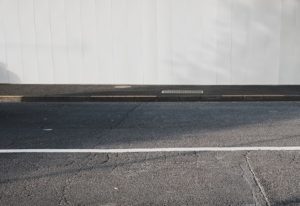Knowing what’s underneath the ground before you begin digging is essential to the safety of your crew and equipment. Not to mention, this is crucial for the well-being of the local community as well. Ground Penetrating Radar or GPR can help to prevent any mishaps. While most utilities and human-made underground features are fully mapped, there is always the chance that a stray wire or pipe might have become changed locations over time. By taking advantage of GPR services, you’re ensuring the safety of your crew, your equipment, and the community-at-large.

By taking advantage of GPR services, you’re ensuring the safety of your crew, your equipment, and the community-at-large.
GPR Has Many Uses
Along with checking for utilities, ground-penetrating radar can also be used in archeological and restoration work. Because GPR allows you to see anomalies in the ground, it can be used to find lost gravesites, unusual objects, and other buried items.
Radar Is Affected By Soil Type
How far the ground-penetrating radar can penetrate has to do with several factors, namely the type of soil in the area you are checking. While in areas with low conductivity soil, like dry sandy areas or those with primary granite, GPR can penetrate up to 30 meters or 100 feet. In areas with high conductivity soils, like shale and moist clay, GPR may only be able to penetrate one meter down or less.
Concrete Doesn’t Affect GPR
Unlike the high conductivity soils, GPR is perfectly able to penetrate through concrete, even if it is reinforced. This means that surveys can be done even over pre-existing construction.
The Tools Are Portable
You might wonder if such a powerful tool is easily transportable, and luckily it is. Often a GPR device is no larger than a small, push operated lawn mower. It can easily be transported and even packed up and transported as airline baggage.
Is GPR Easy To Interpret?
As with any industry, there are times when understanding the readings of a GPR report can be tricky, especially in cases where the area checked has high conductivity materials. However, some data profiles are entirely easy to understand. That said, it’s best to have a professional on hand no matter the case.
Concrete Construction Safety Tips from Concrete Visions
Concrete Visions has over 12 years of experience and expertise in concrete scanning and we know how to detect any problems lurking beneath the surface. We use ground penetrating radar accurately and expertly and are familiar with many other methods that can be used when appropriate like concrete x-ray and electromagnetic conductivity. We are also very familiar with the latest construction safety techniques and train all of our workers to do their work quickly, accurately, and safely. If you would like to learn more about how we can help you, give us a call at (410) 766-2210 or visit us online. For more articles and tips, follow us on Facebook, Twitter, LinkedIn, and Google+.
